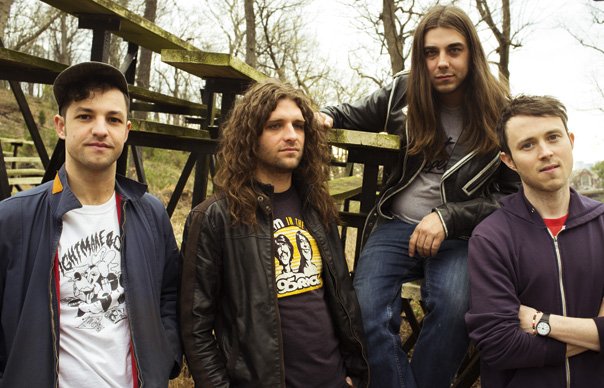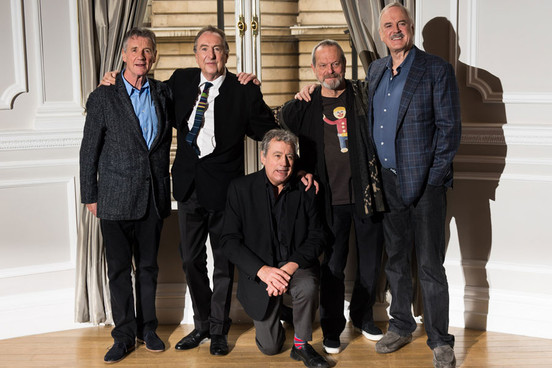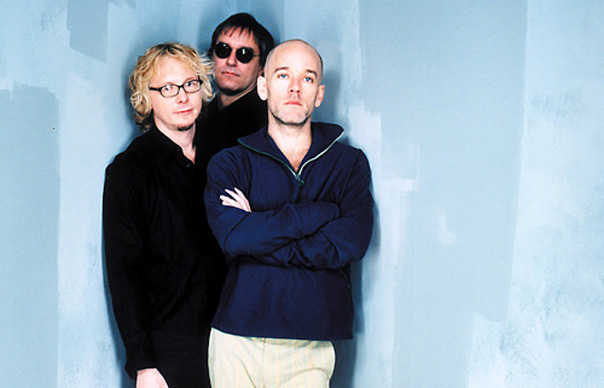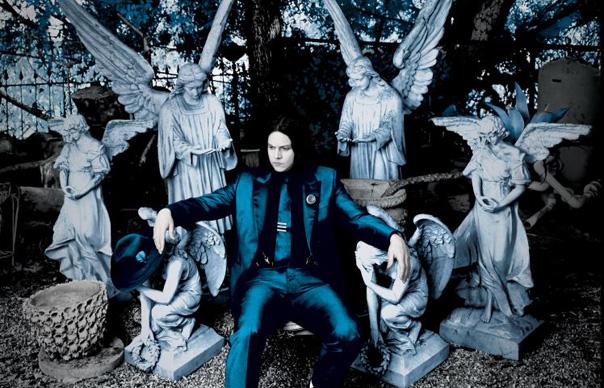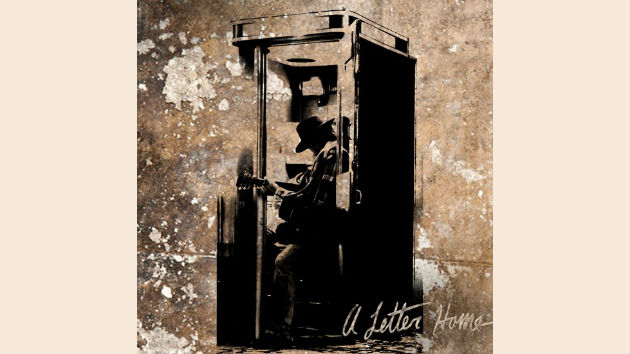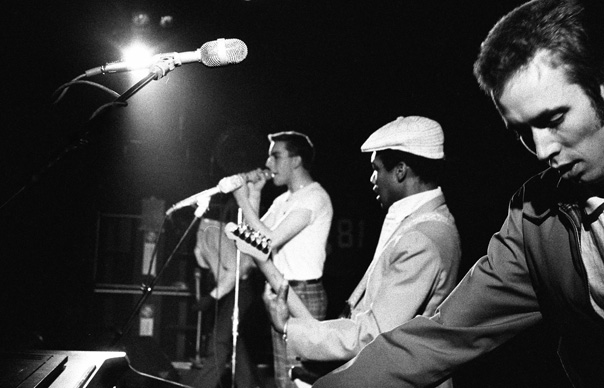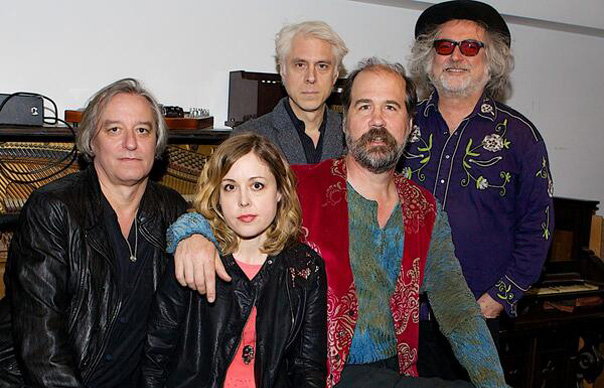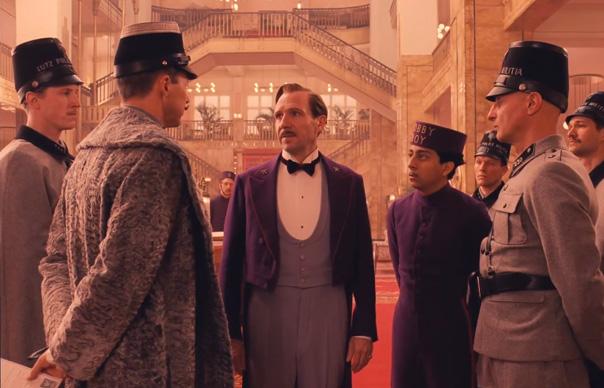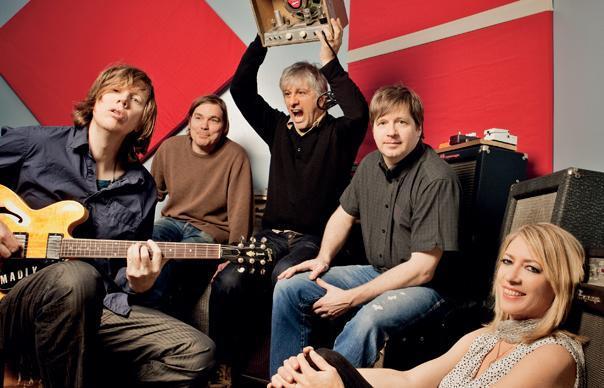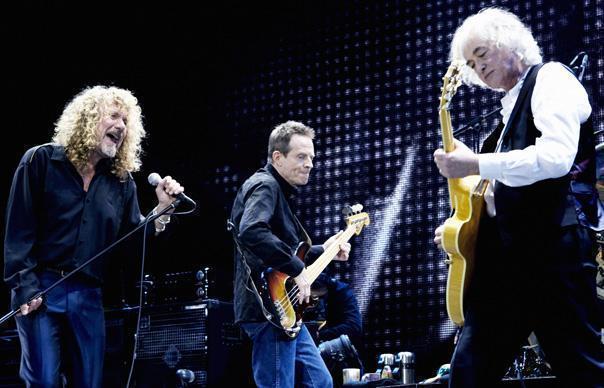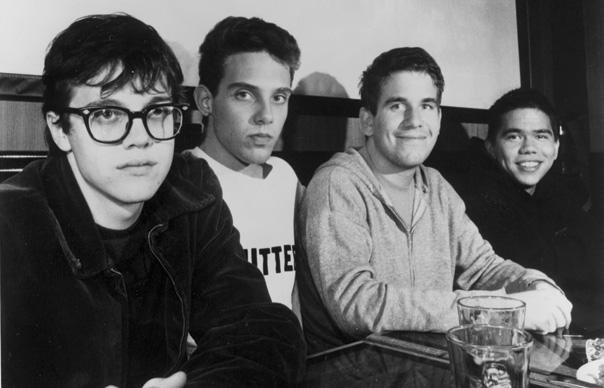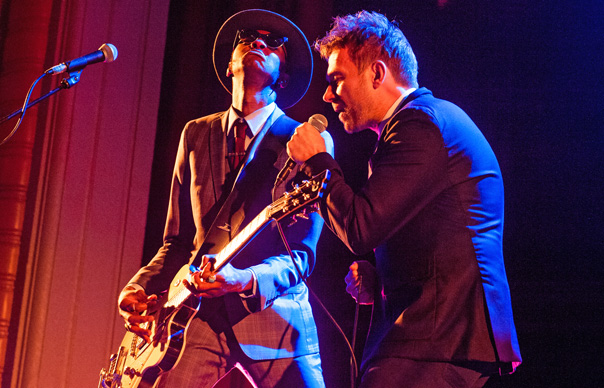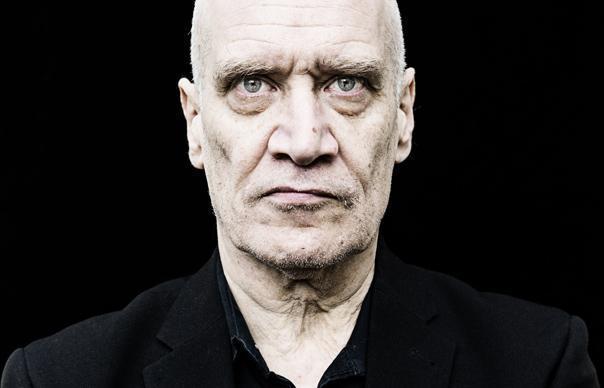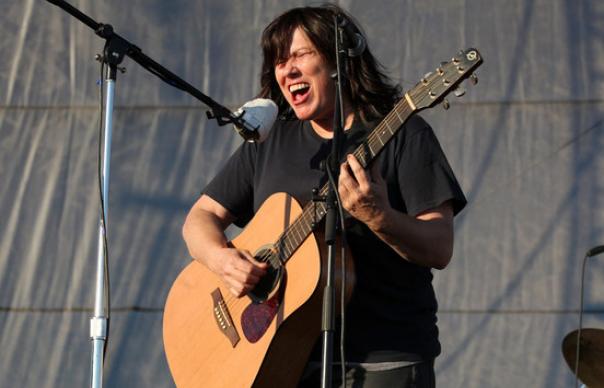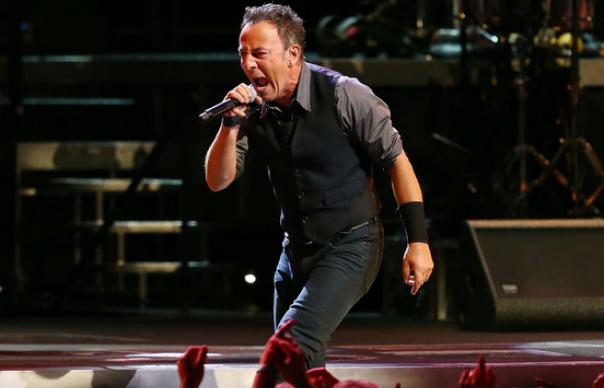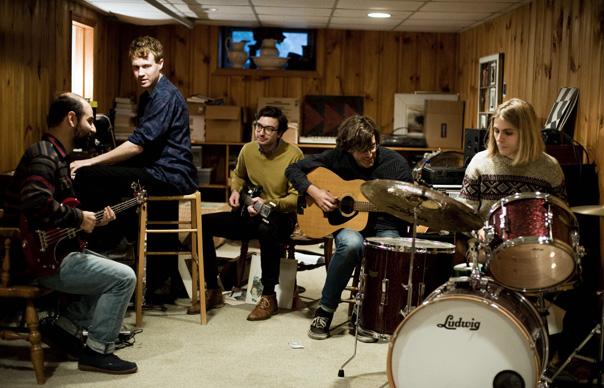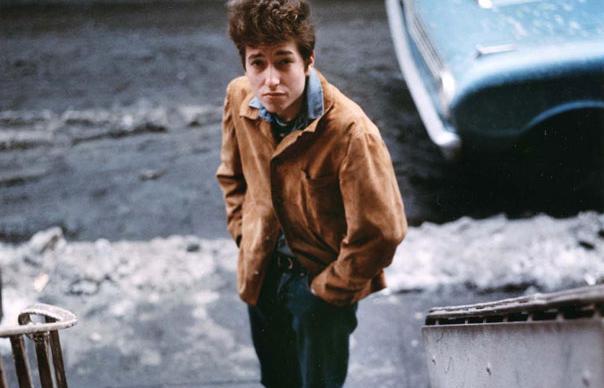A month or so back, I sent Lee Bains III a few questions for a Q&A to run alongside my review of the Glory Fires’ “Dereconstructed” in Uncut. Bains’ answers turned out to be more thoughtful, interesting and extensive than pretty much any email interview I’ve previously conducted, so I’m pleased to run them in their entirety here… UNCUT: Can you explain the meaning behind “Dereconstructed”? LEE BAINS III: This LP is, in part, an attempt to dismantle the overarching, linear, teleological narrative that, to my mind, has worked to keep the Southerner stuck between a rock and a hard place: this dichotomy of reconstructed/unreconstructed. It is an attempt to smash that narrative's definition of what constitutes a Southerner. In that old monolithic story, where are the black, Native American, Tejano, multiracial and female Southerners who have been integral to our region's development since before the notion of the South as a place of its own even arose? Where are the Greek Orthodox of Birmingham, the Chinese-Mississippians of the Delta, the recent Central and South American immigrants that are revitalizing the communities of the rural South? What about LGBT and politically leftist Southerners? Because the dominant narrative of Southern history still centres on Appamattox, is still so strongly identified with a failed 19th-century insurgency, the identity itself becomes, in some sense, tied to finality and defeat. The narrative is fixed; it is a play whose plot has been set to follow an exact course, a study whose conclusion is predetermined, its methodology arranged merely to prove it. All that said, this record is deeply personal, and is intended to represent nobody but myself: one person's struggle to take apart and inspect his personal cultural inheritance. And, believe me, I've got a ways to go in that regard -- miles to go before I sleep. Do you get frustrated with people’s stereotypes of the American south? Do you try and address that in your songs? Not nearly as frustrated as I get with Southerner's stereotypes of the American South. What do you love about Alabama? What do you hate about it? I feel about Alabama the way I do about a family member; I love it completely, and with a great sense of duty. We disagree about plenty, but I am secure enough in that love to talk about it civilly and honestly. But, most of the time, I just shut up, eat my supper, talk football, and enjoy the good company. Your songs are loaded with religious imagery, but at the same time you seem very critical of the way faith is deployed in the States (especially in “Flags”)? Is that a fair interpretation; and are you actually religious? I think that's very fair to say. Just like Southernness, Protestantism has been appropriated by very loud, aggressive personalities for myopic, reactionary, right-wing purposes, and I, as a Southern Christian, take great offence, not only at the snake-oil they're selling people, but also, and particularly, at the fact that they're doing so in the name of things that I hold very sacred: my faith, my home, my culture. Despite the bigotry we often heard slung around in the name of God outside of our home, we were very fortunate to be from a family that believed in the Jesus of the sermon on the mount, the Jesus who admonished the warmongers and jingoists, challenged the money changers and legalists, the Jesus of Fred Shuttlesworth and Martin Luther King Jr. My mama was actually dismissed from teaching Sunday School for voicing her dissent against our church's decision to secede from the national Episcopal Church over the election of a gay bishop in New Hampshire. She told her students that she saw the decision to secede as being antithetical to the nonjudgemental, non-legalistic love that Jesus asks us to show one another. After 15 years of teaching Sunday School, she was fired for it. My brothers and I were raised to learn about and respect others' beliefs and ideals; just because people believed differently didn't mean that they believed wrongly. All the same, our family was Christian, and I was damn-sure supposed to be dressed and ready to get to church early for choir practice at 8:00 every Sunday morning. And I know plenty of people down here who had similar religious upbringings. Despite the sound and the fury that flew around the churches and the media, they came home to parents or grandparents who practiced a simple, quiet faith that emphasized an open-hearted compassion, forgiveness, helpfulness and humility. I have always had friends of different faiths, friends who are atheist and agnostic, and it's never been an impediment to those relationships. I say glory in their spark; whatever works for them is great. This is just what works for me. I am a church-going, Bible-believing Christian that is neither an evangelical nor a so-called literalist. We do still exist. “Flags” and “The Concrete And The Kudzu” also seem to point up the punk/hardcore undercurrent to your music (they remind me of that reference to the “Ramones t-shirt” on “Everything You Took”). Is that accurate? Being exposed to the punk/hardcore/independent scene as a teenager galvanized me in a way that has only intensified over time. Seeing bands of people living out of vans, screaming to be heard through busted shitty PA's, playing songs about things that at the moment felt more important than anything else in the world, being paid in wadded-up ones and fives, sleeping on people's floors. It completely knocked the pedestal out from under rock music, and I loved that about it. And that was just the ethos of it. There were bands playing down here all the time that lit me on fire with these ebullient, drunken, sloppy, joyful, hollering, catchy-as-fuck songs: Against Me!, Hot Water Music, Avail, Strike Anywhere, Plate Six, Blue-Eyed Boy Mr Death. Then I moved to New York, and saw these Northeastern bands that married really aggressive, artful, challenging music with highly intellectual lyrics concerned with politics and the philosophers I was reading in school, bands like Ampere, Transistor Transistor, Sinaloa, Saetia. And then I also got old enough to start seeing music in bars (legally anyway), and started seeing the dirty Alabama bands that brought another type of energy and intensity to beer-slinging, snarling, lean rock'n'roll that sounded exactly like home: Immortal Lee County Killers, Dexateens, Model Citizen, Black Diamond Heavies. I guess punk impressed upon me the notion of personalising all this theory to the point of shaping my own ethos and artistic mission, and I discovered that being myself was, in large part, being Southern, for better or for worse, and that, if I was going to really take any of what I'd learned further than surface-deep, I'd better start facing that shit and doing something with it. http://www.youtube.com/watch?v=CUyKkyNjXq4 What do you think of that line in your old biog that compares you to “Ronnie Van Zant under the tutelage of Noam Chomsky”? Are intellectual and left-wing interests still so unusual in the South? They aren't unusual. Unfortunately, "liberal" is still a four-letter word in a lot of circles down here, but that's a topic for another day. The same people who would never dream of voting democrat are the grandchildren of people who would have rather voted for a yellow dog than a republican. (Hence why so many Southerners proudly wore the label "yellow-dog democrats.") But, no, they are not unusual. I'd be a lonely dude if they were. Still, there is a long Southern tradition of being annoyed by over-intellectualism, and I, for one, am glad for it; it's a way of keeping nerds like me from getting their heads too far into the clouds, or bumming everybody out. Flannery O'Connor, you can tell, really cherished that about the South. I've read in criticism that her sullen intellectual characters are autobiographical; their intelligence is always bested by the people they deem to be common or dumb. What do you think of a band like Blackberry Smoke, who keep being referenced as figureheads of a Southern rock revival? They strike me as being somewhat more unreconstructed than the Glory Fires? I'm actually not familiar with that band. I don't identify with the notion of being unreconstructed at all. I am very much a product of the reconstructed South; I grew up in absolute awareness of the sins of the white South, and grew up taking full cultural responsibility for them, feeling deeply ashamed of them. I thought that, because I took issue with so much of what the South was widely defined to be about, that I wasn't really Southern. So, that's the legacy of reconstruction. And that was in the mind of a white, Protestant, heterosexual, eighth-generation-Alabamian son of college-educated parents with very nuanced and well-read understandings of Southern history and culture. So you can imagine what people with more conflicted identities and backgrounds have to think about all of that as children. I know plenty of people who might describe themselves as "unreconstructed," but I would posit that being unreconstructed is impossible. The "unreconstructed" person is defined by his difference; he is merely a reaction to the "reconstructed" person. Since the "reconstructed" person is really just the manifestation of a concocted narrative, the "unreconstructed" person is, too. The "unreconstructed" person is just somebody who says, "Fuck reconstruction!" Okay, well, like it or not, it happened, and you know it. The reconstructed/unreconstructed question forces folks to dig in their heels over a game of tug-of-war without a rope. And, meanwhile, because all of this is based on the Civil War, the question is leaving out millions of contemporary Southerners who are either the descendants of slaves (and damn glad the War turned out the way it did), or of people who didn't have a dog in the fight to begin with. I guess that's why I want to deconstruct that reconstructed/unreconstructed false duality; because it only leaves us stuck in the mud. A surefire way to kill Southern culture once and for all is to pass the mic to a few old white people arguing between the Emancipation Proclamation and states' rights while generations are being born not saying "yes ma'am" and "no sir," and not knowing the difference between pot-likker and corn liquor, between Hosea Williams and Tennessee Williams. Which album is more important to you, and why: “Pronounced 'Lĕh-'nérd 'Skin-'nérd” or “Southern Rock Opera”? Both were profoundly important. As conflicted a Southerner as I was growing up, my daddy was just as conflicted in his youth, and found great solace and inspiration in the Allman Brothers and Lynyrd Skynyrd. So, he raised me on them, explaining what they meant to him and lots of other Southern kids at the time. I always loved that about Skynyrd: that they so easily evoked in me a pure love for my home and culture without stirring any of those nasty feelings about the extraneous bullshit. Even considering how much I loved them, though, a line of faceless, n-bomb-dropping, rebel-flag-waving dudes blaring 'Sweet Home Alabama' from their trucks made Skynyrd lose their lustre in my teenage years. One day, when I was 16, I think, I snuck into the Five Points Music Hall in Birmingham with a fake ID, and saw Drive-By Truckers on the Southern Rock Opera tour. Slobberbone was opening. There weren't a ton of people there. But I looked around and saw some scuzzy rocker dudes in cowboy boots and ballcaps hollering along to words about the duality of the Southern identity, and George Wallace burning in Hell. I remember feeling a sense of solidarity, and thinking, maybe this is what daddy experienced with those bands when he was in high school. Follow me on Twitter: www.twitter.com/JohnRMulvey PICTURE: Wes Evans
A month or so back, I sent Lee Bains III a few questions for a Q&A to run alongside my review of the Glory Fires’ “Dereconstructed” in Uncut. Bains’ answers turned out to be more thoughtful, interesting and extensive than pretty much any email interview I’ve previously conducted, so I’m pleased to run them in their entirety here…
UNCUT: Can you explain the meaning behind “Dereconstructed”?
LEE BAINS III: This LP is, in part, an attempt to dismantle the overarching, linear, teleological narrative that, to my mind, has worked to keep the Southerner stuck between a rock and a hard place: this dichotomy of reconstructed/unreconstructed. It is an attempt to smash that narrative’s definition of what constitutes a Southerner.
In that old monolithic story, where are the black, Native American, Tejano, multiracial and female Southerners who have been integral to our region’s development since before the notion of the South as a place of its own even arose? Where are the Greek Orthodox of Birmingham, the Chinese-Mississippians of the Delta, the recent Central and South American immigrants that are revitalizing the communities of the rural South? What about LGBT and politically leftist Southerners?
Because the dominant narrative of Southern history still centres on Appamattox, is still so strongly identified with a failed 19th-century insurgency, the identity itself becomes, in some sense, tied to finality and defeat. The narrative is fixed; it is a play whose plot has been set to follow an exact course, a study whose conclusion is predetermined, its methodology arranged merely to prove it. All that said, this record is deeply personal, and is intended to represent nobody but myself: one person’s struggle to take apart and inspect his personal cultural inheritance. And, believe me, I’ve got a ways to go in that regard — miles to go before I sleep.
Do you get frustrated with people’s stereotypes of the American south? Do you try and address that in your songs?
Not nearly as frustrated as I get with Southerner’s stereotypes of the American South.
What do you love about Alabama? What do you hate about it?
I feel about Alabama the way I do about a family member; I love it completely, and with a great sense of duty. We disagree about plenty, but I am secure enough in that love to talk about it civilly and honestly. But, most of the time, I just shut up, eat my supper, talk football, and enjoy the good company.
Your songs are loaded with religious imagery, but at the same time you seem very critical of the way faith is deployed in the States (especially in “Flags”)? Is that a fair interpretation; and are you actually religious?
I think that’s very fair to say. Just like Southernness, Protestantism has been appropriated by very loud, aggressive personalities for myopic, reactionary, right-wing purposes, and I, as a Southern Christian, take great offence, not only at the snake-oil they’re selling people, but also, and particularly, at the fact that they’re doing so in the name of things that I hold very sacred: my faith, my home, my culture.
Despite the bigotry we often heard slung around in the name of God outside of our home, we were very fortunate to be from a family that believed in the Jesus of the sermon on the mount, the Jesus who admonished the warmongers and jingoists, challenged the money changers and legalists, the Jesus of Fred Shuttlesworth and Martin Luther King Jr. My mama was actually dismissed from teaching Sunday School for voicing her dissent against our church’s decision to secede from the national Episcopal Church over the election of a gay bishop in New Hampshire. She told her students that she saw the decision to secede as being antithetical to the nonjudgemental, non-legalistic love that Jesus asks us to show one another. After 15 years of teaching Sunday School, she was fired for it.
My brothers and I were raised to learn about and respect others’ beliefs and ideals; just because people believed differently didn’t mean that they believed wrongly. All the same, our family was Christian, and I was damn-sure supposed to be dressed and ready to get to church early for choir practice at 8:00 every Sunday morning. And I know plenty of people down here who had similar religious upbringings. Despite the sound and the fury that flew around the churches and the media, they came home to parents or grandparents who practiced a simple, quiet faith that emphasized an open-hearted compassion, forgiveness, helpfulness and humility.
I have always had friends of different faiths, friends who are atheist and agnostic, and it’s never been an impediment to those relationships. I say glory in their spark; whatever works for them is great. This is just what works for me. I am a church-going, Bible-believing Christian that is neither an evangelical nor a so-called literalist. We do still exist.
“Flags” and “The Concrete And The Kudzu” also seem to point up the punk/hardcore undercurrent to your music (they remind me of that reference to the “Ramones t-shirt” on “Everything You Took”). Is that accurate?
Being exposed to the punk/hardcore/independent scene as a teenager galvanized me in a way that has only intensified over time. Seeing bands of people living out of vans, screaming to be heard through busted shitty PA’s, playing songs about things that at the moment felt more important than anything else in the world, being paid in wadded-up ones and fives, sleeping on people’s floors. It completely knocked the pedestal out from under rock music, and I loved that about it. And that was just the ethos of it.
There were bands playing down here all the time that lit me on fire with these ebullient, drunken, sloppy, joyful, hollering, catchy-as-fuck songs: Against Me!, Hot Water Music, Avail, Strike Anywhere, Plate Six, Blue-Eyed Boy Mr Death. Then I moved to New York, and saw these Northeastern bands that married really aggressive, artful, challenging music with highly intellectual lyrics concerned with politics and the philosophers I was reading in school, bands like Ampere, Transistor Transistor, Sinaloa, Saetia.
And then I also got old enough to start seeing music in bars (legally anyway), and started seeing the dirty Alabama bands that brought another type of energy and intensity to beer-slinging, snarling, lean rock’n’roll that sounded exactly like home: Immortal Lee County Killers, Dexateens, Model Citizen, Black Diamond Heavies. I guess punk impressed upon me the notion of personalising all this theory to the point of shaping my own ethos and artistic mission, and I discovered that being myself was, in large part, being Southern, for better or for worse, and that, if I was going to really take any of what I’d learned further than surface-deep, I’d better start facing that shit and doing something with it.
What do you think of that line in your old biog that compares you to “Ronnie Van Zant under the tutelage of Noam Chomsky”? Are intellectual and left-wing interests still so unusual in the South?
They aren’t unusual. Unfortunately, “liberal” is still a four-letter word in a lot of circles down here, but that’s a topic for another day. The same people who would never dream of voting democrat are the grandchildren of people who would have rather voted for a yellow dog than a republican. (Hence why so many Southerners proudly wore the label “yellow-dog democrats.”) But, no, they are not unusual. I’d be a lonely dude if they were.
Still, there is a long Southern tradition of being annoyed by over-intellectualism, and I, for one, am glad for it; it’s a way of keeping nerds like me from getting their heads too far into the clouds, or bumming everybody out. Flannery O’Connor, you can tell, really cherished that about the South. I’ve read in criticism that her sullen intellectual characters are autobiographical; their intelligence is always bested by the people they deem to be common or dumb.
What do you think of a band like Blackberry Smoke, who keep being referenced as figureheads of a Southern rock revival? They strike me as being somewhat more unreconstructed than the Glory Fires?
I’m actually not familiar with that band. I don’t identify with the notion of being unreconstructed at all. I am very much a product of the reconstructed South; I grew up in absolute awareness of the sins of the white South, and grew up taking full cultural responsibility for them, feeling deeply ashamed of them. I thought that, because I took issue with so much of what the South was widely defined to be about, that I wasn’t really Southern.
So, that’s the legacy of reconstruction. And that was in the mind of a white, Protestant, heterosexual, eighth-generation-Alabamian son of college-educated parents with very nuanced and well-read understandings of Southern history and culture. So you can imagine what people with more conflicted identities and backgrounds have to think about all of that as children.
I know plenty of people who might describe themselves as “unreconstructed,” but I would posit that being unreconstructed is impossible. The “unreconstructed” person is defined by his difference; he is merely a reaction to the “reconstructed” person. Since the “reconstructed” person is really just the manifestation of a concocted narrative, the “unreconstructed” person is, too. The “unreconstructed” person is just somebody who says, “Fuck reconstruction!” Okay, well, like it or not, it happened, and you know it.
The reconstructed/unreconstructed question forces folks to dig in their heels over a game of tug-of-war without a rope. And, meanwhile, because all of this is based on the Civil War, the question is leaving out millions of contemporary Southerners who are either the descendants of slaves (and damn glad the War turned out the way it did), or of people who didn’t have a dog in the fight to begin with.
I guess that’s why I want to deconstruct that reconstructed/unreconstructed false duality; because it only leaves us stuck in the mud. A surefire way to kill Southern culture once and for all is to pass the mic to a few old white people arguing between the Emancipation Proclamation and states’ rights while generations are being born not saying “yes ma’am” and “no sir,” and not knowing the difference between pot-likker and corn liquor, between Hosea Williams and Tennessee Williams.
Which album is more important to you, and why: “Pronounced ‘Lĕh-‘nérd ‘Skin-‘nérd” or “Southern Rock Opera”?
Both were profoundly important. As conflicted a Southerner as I was growing up, my daddy was just as conflicted in his youth, and found great solace and inspiration in the Allman Brothers and Lynyrd Skynyrd. So, he raised me on them, explaining what they meant to him and lots of other Southern kids at the time. I always loved that about Skynyrd: that they so easily evoked in me a pure love for my home and culture without stirring any of those nasty feelings about the extraneous bullshit. Even considering how much I loved them, though, a line of faceless, n-bomb-dropping, rebel-flag-waving dudes blaring ‘Sweet Home Alabama’ from their trucks made Skynyrd lose their lustre in my teenage years.
One day, when I was 16, I think, I snuck into the Five Points Music Hall in Birmingham with a fake ID, and saw Drive-By Truckers on the Southern Rock Opera tour. Slobberbone was opening. There weren’t a ton of people there. But I looked around and saw some scuzzy rocker dudes in cowboy boots and ballcaps hollering along to words about the duality of the Southern identity, and George Wallace burning in Hell. I remember feeling a sense of solidarity, and thinking, maybe this is what daddy experienced with those bands when he was in high school.
Follow me on Twitter: www.twitter.com/JohnRMulvey
PICTURE: Wes Evans


